2015 Yamaha YZF-R1 Tested On The Dyno!
More power than ever
I felt as giddy as a kid at Christmas when I heard Yamaha’s new R1 was prepped and readied for MO’s home-soil evaluation. We already knew it was ready to challenge the best of the best – our Troy Siahaan came back from its launch raving about how the R1 is resetting the bar in the stupefyingly magnificent superbike class – but I was anxious to find out for myself just how impressive it is.
2015 Yamaha YZF-R1/YZF-R1M First Ride Review + Video
And it looks sensational in person, more like a European exotic than a run-of-the-mill Japanese literbike. The MotoGP theme starts at its number-plate-like nose and continues when its crossplane-crank inline-Four is fired up, changing from an animalistic growl to an otherworldly howl as revs climb. It sounds pretty much like Val Rossi’s bike. A quick blast on the freeway revealed power output levels about as good as anything in its class, maybe even BMW’s awesome S1000RR. I expected to see about 170 horses from its rear wheel.
2015 BMW S1000RR Review + Video
So, my first stop was a dyno to see what it could do, but our R1 was handicapped in two ways. First, the engine had fewer than 250 miles on it, which means it was relatively tight. Second, the Moto Shop (formerly CM Motorsports/Cycle Mall) dyno where I was headed is notoriously stingy with its numbers. Their Dynojet 250i is often referred to as the Heartbreaker.
The Moto Shop dyno lived up to its name, registering a peak of 158.2 horsepower from our 2015 R1, which is a nice number but not quite as big as what we anticipated. The R1 is purported to generate 200 horses when factory rated at its crankshaft, and when equipped with the accessory Circuit ECU. Subtract a loss of about 10% after going through a transmission and a chain drive and one would expect nearly 180 ponies at the rear wheel. However, there’s more to this story. Much more.
The (pre-2015) BMW S1000RR produced just 163 hp on the Heartbreaker, placing the R1 just five horses down on the class champ. Also, Moto Shop’s owner, Tige Daane, sets his dyno software to the SAE correction factor, which produces lower numbers than the STD setting, and to maximum smoothing, which polishes off the spikes caused by sensor glitches and/or drive-lash. Simply changing the correx factor from SAE to STD results in a 162.2-hp reading. Removing the smoothing function makes it jump to 165.2 hp.
Now, keep in mind that engines with ride-by-wire throttles are operated by a computer that doesn’t necessarily respond directly to a rider’s throttle hand. Tige at Moto Shop says the R1’s ECU is “really restricted,” dialing back throttles at certain stages of its rev range. He estimates he’d see about 175 hp after an ECU reflash and fitment of an aftermarket exhaust.
We wondered if our experience with the R1 on a rear-wheel dyno was consistent to others, so we reached out to Graves Motorsports, America’s most visible Yamaha tuning company due to its heavy racing involvement. Chuck Graves wasn’t too surprised at the 158 hp our test bike registered, as the last one he had on his dyno kicked out just a trio of extra ponies, 161, which was less than he was expecting.
A few months ago, a pre-production R1 spun Graves’ dyno to the tune of 177 hp. It is possible that earlier bike may have been equipped with an ECU map that was not yet compliant with U.S. emissions requirements? Chuck says the 2015 R1’s throttle butterflies close down about 20% once revs climb above 10,000 rpm; the earlier R1s also partially re-closed their throttle butterflies at high revs, approximately 15% according to Graves. He adds that an ECU reflash and a Graves exhaust will yield around 180 hp from the new R1.
When we asked Yamaha to comment on any differences between U.S. and European specs and tuning, media relations manager, Marcus DeMichele, responded by saying: “The U.S. ECU is developed to meet U.S. regulations for exhaust and noise emissions which are not the same as Europe.” Reading between the lines, American-market R1s won’t produce quite the same peak power as European markets due to noise-emissions regulations. This was also the case for the latest-generation Kawasaki ZX-10Rs imported to America.
DeMichele noted that Yamaha will be offering an unrestricted race-spec ECU, but it’s not intended for street use – it disconnects the headlight and linked braking, plus the ABS system goes into a racetrack setting that eliminates rear antilock control . Yamaha has promised we’ll get a chance to test the accessory ECU in the near future so we “will be able to experience the R1 with full power capabilities.”
To see a big horsepower number from the R1, Graves suggested I check with Attack Performance, as that shop was rumored to have come up with some astoundingly large power figures. Attack is another serious tuning shop for roadracers, well versed in technology and performance tuning.
Jozef Tomasovich, a lead mechanic at Attack, told me he saw 178 hp from a new R1, bone-stock except for race tires. He added that BMW S1000RRs usually register 180-182 hp on the Attack dyno, meaning the Yamaha is quite competitive, relatively speaking, with the best in class.
So I took our sexy beast out for a second dyno date, rolling the R1 onto Attack’s Dynojet 250i dyno for another chance at posting an exclamation-point-inducing horsepower number. Attack uses the the SAE correction factor and the smoothing feature set to maximum, so the electronic setups are largely identical to Moto Shop. However, Tomasovich used two methods Moto Shop didn’t to ensure optimum power levels: Tire pressure was dropped from 42 psi to 30, and the footpegs were tied down with straps, both of which help prevent tire slippage on the heavy, knurled steel drum to extract maximum power.
So, the new R1 produces 178.2 horsepower on Attack’s dyno, digits worthy of an exclamation point! It’s ironic that Attack’s dyno is known to be looser than most, while Moto Shop’s is known to be miserly – both shops acknowledge their dynos’ inverse reputations. It is likely the R1’s true U.S. output will end up somewhere in the middle, let’s say around 168 hp.
What matters most, including to the above-mentioned shops helmed by nice and knowledgeable people, are the numbers produced relative to others on the same dyno. To prove how the R1 stacks up to its competition, we’ll need to run all eligible bikes on the same day on the same dyno.
The R1 is an early favorite to grab the laurels in what’s shaping up to be the most competitive literbike/superbike shootout in history. But the class-leading S1000RR received worthwhile updates for 2015, and Ducati’s new 1299 Panigale might be swinging the biggest pipe in the engine department.
2015 Ducati 1299 Panigale First Ride Review + Video
And then there’s the refreshed Aprilia RSV4 which I’ll be riding next week, boasting the same 200-hp claim as the R1. Kawi’s ZX-10R is also a formidable opponent, and we wonder if the radical H2 might be able to compete. The storm clouds are gathering…
More by Kevin Duke




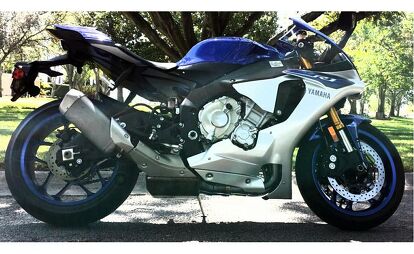






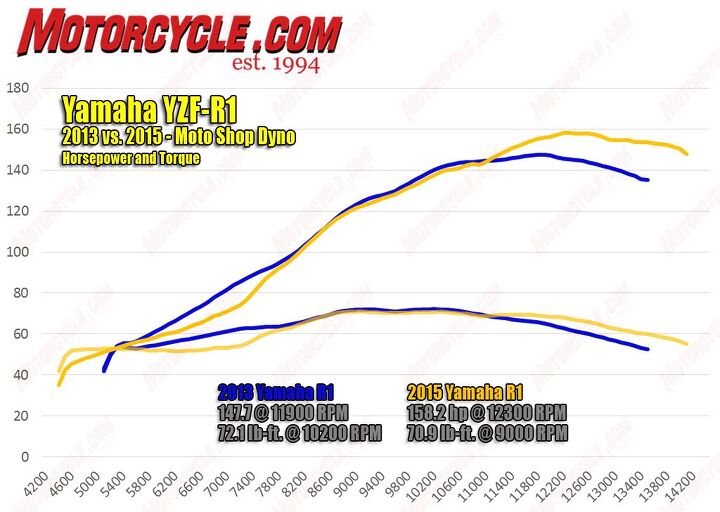











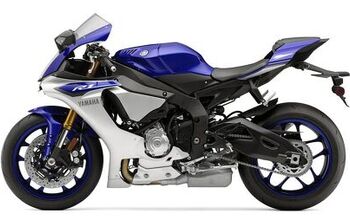

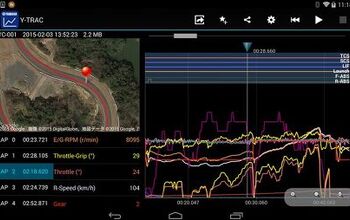
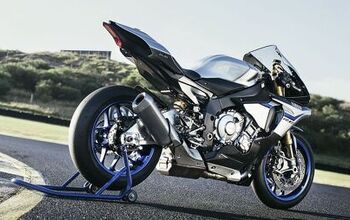













Comments
Join the conversation
More relevant info here: http://www.motorcycle.com/s...
To most, this topic is
irrelevant. Because, let’s face it, horsepower sells motorcycles, cars, trucks
and everything in between. The problem is most of what you read and hear is
bullshit. Let me throw a quick story at you, an angry response to a nonsensical
publication and then present some facts.
I live in Oregon and used to run around with a guy that worked at one the
most well known sport bike tuners in the state. He eventually left and opened
up his own shop. One of the reasons he left was personal ethics. He now does a
lot of work for PIR raceway. You wouldn't believe some of the stories he has
told me about this tuners shop and their "fudging" dyno pull numbers.
Unfortunately, this is all too common.
Reading motorcycle magazines and aftermarket parts manufactures is
essentially like watching partisan news. You know their agenda before hand, yet
they still piss on your head and tell you it's raining.
Below is response I sent to Motorcycle News (MCN) after reading one of
their ridiculous articles. Evidentially, this publication practices
the same nonsense.
“Hey MCN -
Motorcyclenews.com, please have your "journalists" take a course in
basic mechanics before you publish anything else.
Quick lesson for you (from
the kindness of my heart):
Brake horsepower (BHP) is
the measure of an engine's horsepower before the loss found in things like
tires, wheels, wheel bearings, axle, chains, brake drag, etc etc. Wheel
horsepower (WHP), or Rear wheel horsepower (RWHP) is the information a dyno run
provides and usually reads around 10-15% less than the power measured at the engine
(BHP). WHP or RWHP will always be less than
BHP.
This said, STOP CLAIMING FALSE NUMBERS as a
marketing tool. If you're simply working for the highest bidder than at least
be honest and admit you’re nothing more than a marketing firm.”
Now that I’ve gotten that out of the way, let’s get into a few facts.
First and foremost, you can and tuners do manipulate dyno numbers. How you
might ask? Simple, by not “correcting” the numbers.”
One of the reasons that dynos differ so much from day to day and dyno to
dyno is because of the different standards being used. Some dynos are set up to
calculate “Engine Horsepower”. Some are set up to calculate “Wheel
Horsepower”. The problem is and always has been with the individual
mathematical calculations which are open to manipulation by the
individual tuner. I challenge you to get the same results, on the same day from the
same dyno using the same bike. It simply doesn’t work that way. Dynos are a
great tool for tuning, but extremely unreliable for accurate horsepower
ratings. The best rule of thumb is to take SAE BHP numbers and deduct about 10-15%. This will get you in the ballpark and
save you 2 -300 dollars for a fabricated piece of paper.
An article from
Harleytalking.com illustrates these assertions quite well while recounting an
article from HotRod Magazine from many years ago.
Apparently, in 1972,
the Society of Automotive Engineers (SAE) decided to incorporate one standard
for measuring horsepower. The formula that is used to calculate horsepower
is Torque multiplied by RPM divided by 5252. This is
the formula that most dynos use.
If everything was on the “up and up” all tuners
would be using this standard. Unfortunately, they don’t. All dynamometers can
change the standards they’re using and can also change the formula. The tuner
ultimately has the control over the formula and standards used. And let’s be
honest, businesses are in business to do what? You got it – make money. And
nothing makes an unsuspecting and naive customer happier than walking out of
their local tuners shop with a piece of paper showing huge gains over some
dumbass ECU re-flash or exhaust switch.
After years of
working on and owning motorcycles I can tell you one thing. That is this – If
you want large horsepower gains you are going to have to at the very least dig
into your motorcycles valvetrain. Period, end of story. No exhaust system in
the world or PC/Bazzaz mapping is going to substitute for actual engine mods.
Manufactures build their bikes to last and limit what the motors are capable
of. No manufacturer in their right mind is going to push their motors to the
ragged edge and offer a warranty.
And in this day and
age is it really an issue? Is anyone out there on a literbike really lacking
power? If you think so, go hit an open road and floor it. If you don’t lose
your license in the process, die, or get arrested, you’ll be greeted with a
rush that’s near orgasmic. This has been the case for the last 14 years or so.
Ride what you like
and forget the rest. And whatever you do, don’t invest your hard earned money
on some reported dyno figures. Because after all, dyno numbers are…
And yes, if the R1 is
producing 163 rwhp (corrected number) than it’s 17 grand price tag is
outrageous. Gixxers and ZX10’s were doing that 10 years ago. And for those
thinking of dropping the cash, think about this. Yam is now advising their
customers to invest in trickle chargers as their bikes battery systems seem to
be dying for no reason. I’ve heard a couple rumors or people crashing when
their bikes loose power while riding. Something to think about.
And on the same topic, we’re
are still talking about a bike that’s 17 grand right? So with full exhaust, ECU
flash, dyno tune and finance charges (for those that don’t have that cash
outright) you’re looking at what 25-30 grand over 5 years (without maintenance).
Doesn’t sound like much of
an investment to me. At the reputed HP ratings remind me of the r6 from years
ago. Yam is famous for overstating hp and performance.